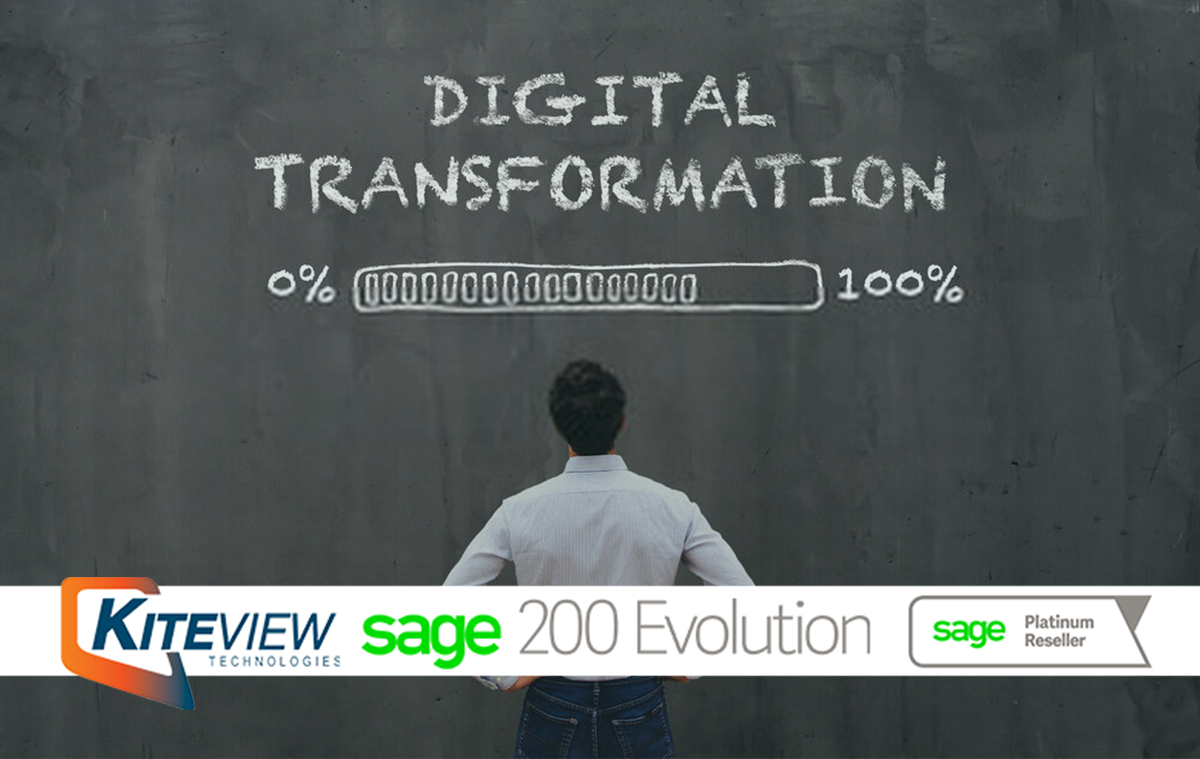Article credit: Sage
The phrase ‘digital transformation’ is a perfect example of how the technology sector likes broad-stroke concepts to explain the revolutionary. It’s also an example of how a message can get lost in translation.
Despite being around for several years, the concept still causes confusion and anxiety.
The only certainty it projects is that digital transformation is necessary and that those organisations that don’t transform will eventually die. But being so far down the line, some question if there is still time to change – this notion couldn’t be further from the truth.
It’s never too late. Whether you’re behind the curve, on top of the curve, or leading the curve it’s still relevant. People think digital transformation is this massive word they need to unpack in their business and they’re going to change the entire business. No, digital transformation can be taking a simple concept and automating it.
Digital transformation defined
Digital transformation describes how businesses can leverage digital technologies to become leaner, be more disruptive, and grow faster. But this needn’t be a complicated event. For example, automating mundane tasks in an organisation is an example of digital transformation.
However, it is approached, digital transformation can’t just be tacked onto the business. It introduces new ways of accomplishing tasks and solving problems, which means there will be a cultural shift. It also requires an overarching strategy to ensure transformation gains don’t turn into silos of excellence in a sea of if-it-ain’t-broke attitudes.
What’s very important is that you keep your end goal intact. You must remember the original outcome you wanted from this digital strategy digital journey at the end of the day.
How does automating mundane tasks align with such a far-reaching vision? This is perhaps where most transformation ambitions struggle. But it goes back to the earlier point. These changes are not peripheral improvements but instead tweaks inside the business machinery. They will impact how people do their tasks and what else they can do. Such profound events will cause ripples and demand accommodation if they are to be accepted and successful.
In the past, you were measured on the number of calls you took. But now, companies should measure the digital experience on the platforms that customers are using.
Faster business, faster response = improved customer satisfaction
There is one thing that will happen, regardless of whether you are tweaking mundane tasks or remodeling entire sections of the organisation. The speed of the business – particularly its response to problems – should accelerate. The structure must be able to take advantage of this acceleration.
Examples of this include faster responses to customer queries and thus improved customer satisfaction. It also manifests through a culture of experimentation. It’s worth mentioning that in this new world, you shouldn’t be scared of making a mistake. It’s about how quickly the business can shift direction or momentum on an outcome.
Such a culture and agility is why an overarching strategy is necessary.
You must interlock the technology with the business strategy, and that sits with the CEO. But the rest of the C-suite is as crucial. CIOs must shift away from maintaining technology as an outcome and towards understanding customer satisfaction as an outcome of their work. CFOs must come out of the back office into the front lines of the business, giving support to different stakeholders. There is a role to play at every position.
It doesn’t matter what industry you take. There’s going to be some transformation. You have to sit down and say, ‘What is our end result?’. But you don’t need to take this massive leap. You need to know the big picture – digital transformation can begin almost anywhere and anytime.
It’s not too late to start your digital transformation. Don’t let the revolutionary vibes throw you off. If you have an outcome in view, you can take small steps and build them out. This is why every digital transformation journey is unique.
Stop looking at the business Joneses and start looking at what you can change in your company to make it faster, more agile, and ready to evolve.
Kiteview Technologies (Pty) Ltd was founded in May 2010 to provide the Sage Evolution Business Management solution to the SME market. The management team of Kiteview have combined +30 years of experience in the delivery of small to mid-market Financial & Business Management solutions. This experience, combined with a sound project implementation methodology has helped in Kiteview’s growth, becoming a Platinum status partner for SAGE Pastel within just 1 year.
Contact Us
For An Obligation Free Quote








